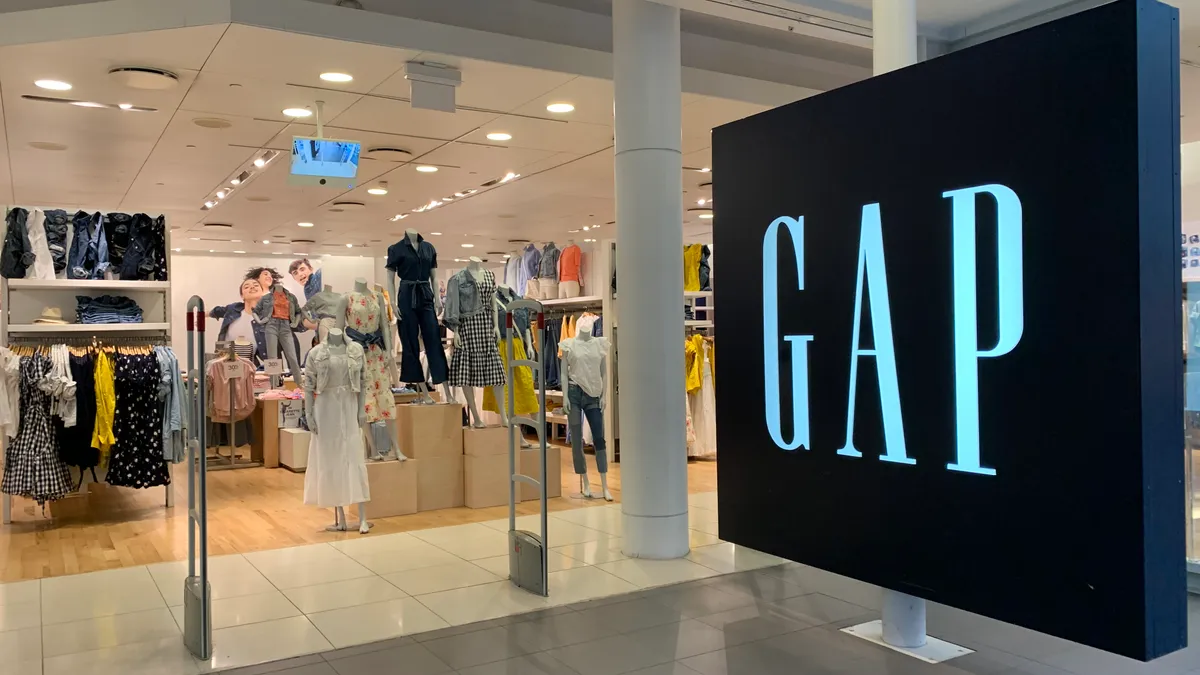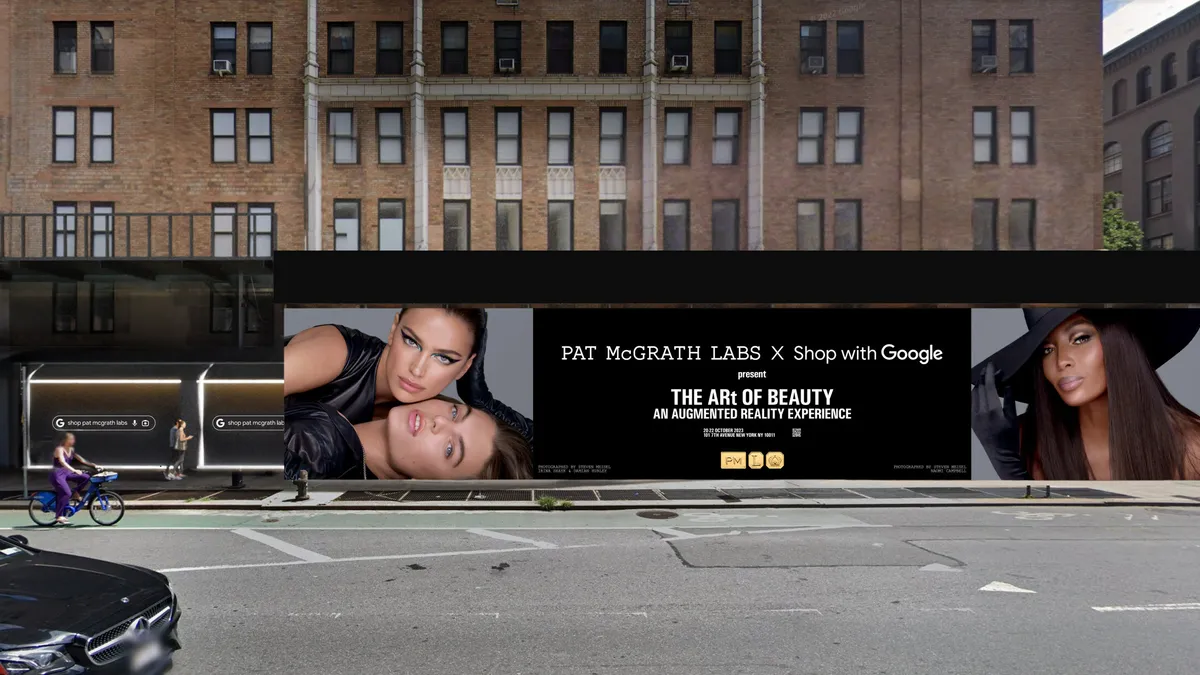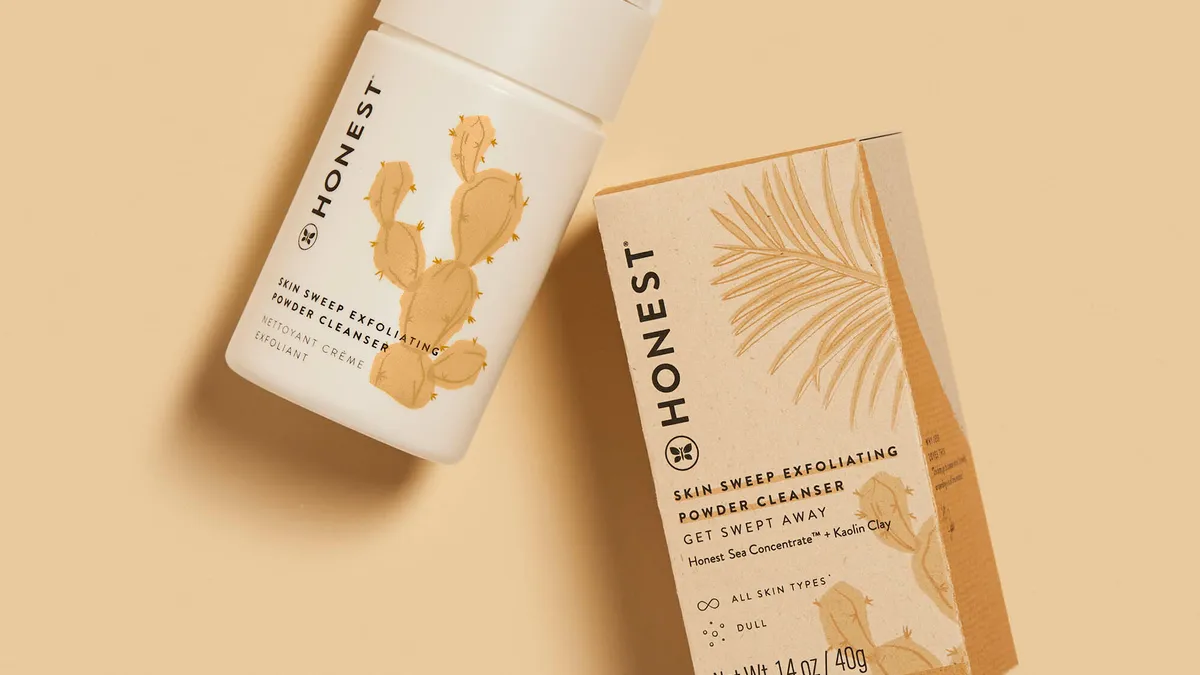As of this past spring, Gap Inc. has a fresh executive suite in place, but the blueprint for growth and margin expansion that those executives unveiled at their annual shareholder meeting Thursday broadly resembles plans outlined by the former team at the same meeting last year.
Back then, the company was still contemplating a spin-off of better-performing Old Navy, a plan finally abandoned after investors balked in light of the value brand's poor showing all last year. On Thursday, it was clear that brand now serves as the fulcrum of the company's overall strategy.
Executives zeroed in on operational improvements — including closing 220 Gap and 130 Banana Republic stores by 2023, representing nearly a third of the North American fleet for those banners. The company is largely abandoning the mall, with plans to run 80% of locations at strip centers, city centers and outlets by 2023. Even that expands on a theme floated by former CEO Art Peck over a year ago.
To drive growth and achieve a 10% operating margin, Gap Inc. aims to double e-commerce to 50% of sales, double Athleta sales to $2 billion and grow Old Navy to $10 billion. Old Navy's store expansion will slow to 30 to 40 annually, all in markets with populations less than 200,000.
The company has several levers to pull and different scenarios it envisions to get to the 10% consolidated EBIT margin it's aiming for, Gap Inc. CEO Sonia Syngal said Thursday. Taking in the possibilities and expectations as outlined by the team, BMO Capital Markets analysts reckon that if Gap, Banana Republic and the company's other brands don't get much over zero, Old Navy and Athleta together would need a 15% margin. If the stronger two brands each earn 12%, Gap, Banana Republic and the others would need to reach a 6% margin.
"Bottom line: we believe Old Navy's performance will be critical," BMO Managing Director Simeon Siegel said in a Thursday client note.
A blow to the mall
Closing Gap and Banana Republic stores is now a tried and true tactic at Gap Inc.; the company has closed some 500 stores over the last decade, by BMO Capital Markets' measure.
The company doubled down on that again Thursday, reiterating that it will close about 225 Gap and Banana Republic stores in fiscal 2020 alone. The move to flee to off-mall real estate represents yet another blow to traditional malls already reeling from the departure of anchor department stores. But it's not clear how much the savings will boost margins, Siegel warned.
"[I]t's important to acknowledge that [Gap Inc.] has been closing underperforming stores for years in the hopes of raising margin rates… and yet its margins continue to slip," he said. "[A]lmost all companies see revenues AND EBIT dollars below the pre-store closure levels. More often that not, closing stores looks good on paper but fails to elevate profits in reality."
In a Friday note from MKM Partners, Managing Director Roxanne Meyer said it would take brand improvements, especially at Gap, to get there.
"Right-sizing one's way to profitability hasn't panned out (almost ever) without improving brand relevancy," she said. "In our view, [Gap Inc.] would be rewarded if Gap just went away — it would be clean."
Still, considering that Gap has performed better recently thanks to "a greater focus on key categories, aggressive store closings, and leaner inventory, there is some evidence of relevancy," according to Meyer.
"That said, while repositioning off-mall will be an improvement, an off-mall brand in and of itself doesn't spell success — there's plenty of evidence of that," she said.
The company's plan to either close down or franchise the operations in Europe that it now runs itself does hold promise, she said, calling it "low-hanging-fruit." Executives on Thursday said they are mulling their options for the 120 stores the company runs in the U.K, Ireland, Italy and France.
Gap's past tense
"We have led the casualization of the American wardrobe," Syngal said as she opened the meeting. But the declaration served only to underscore how far the company's namesake brand, indeed once at the forefront of casual style, has fallen.
The pandemic has only bolstered consumers' desertion of work and formal attire, which should be a boon to Gap. By contrast, that has hit Banana Republic hard, with sales down 52% in the second quarter. In response, brand chief Ann Doyle said the company is dropping men's suits and women's dresses in favor of more comfortable items, including what she called "elevated fleece."
The risk is that shoppers know the brand for its office garb, but it is a logical move that could boost some sales, notes GlobalData Retail Managing Director Neil Saunders.
"Banana Republic is in a very difficult place as its whole reason for being — to provide smart casual workwear — has been upended," Saunders said. "Given this, the decision to drop suiting — which is a challenged category anyway due to casualization — and other more formal categories makes sense."
The story at Gap is murkier. Gap has recently introduced a teen brand, is adding more plus sizes and said its Yeezy capsule will likely be ready early next year. That collaboration could build interest and "create some much-needed energy," Saunders said, "but it isn't enough."
Indeed, anyone hoping to hear how Gap might change its stripes was destined to be disappointed. When asked about any plans to shake up fashion at Gap, executives demurred, pointing to the brand's longevity and their plans to right-size it. But then, that's "typical of Gap," according to Saunders. While it's prudent to "put the house in operational order," the emphasis on operations doesn't address the brand's underlying problem, and the spotlight on Old Navy and Athleta underscores the neglect at Gap, Saunders said by email.
"In many ways, it seems like management has just given up on Gap and is prepared to let it slide into obscurity," Saunders also said. "That's a great shame and, if it is true, it spells the end of a once iconic brand. Admittedly, this is a difficult time to be making big decisions, but when you look at brands like Abercrombie & Fitch and American Eagle and Forever 21, they are all trying and reinventing themselves. Effort is being made and, in many cases, it is paying off."




















